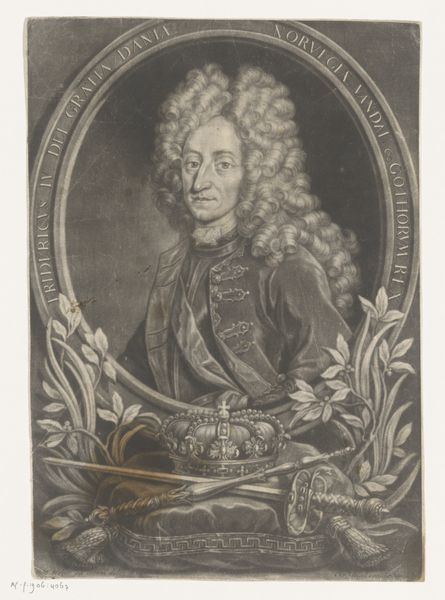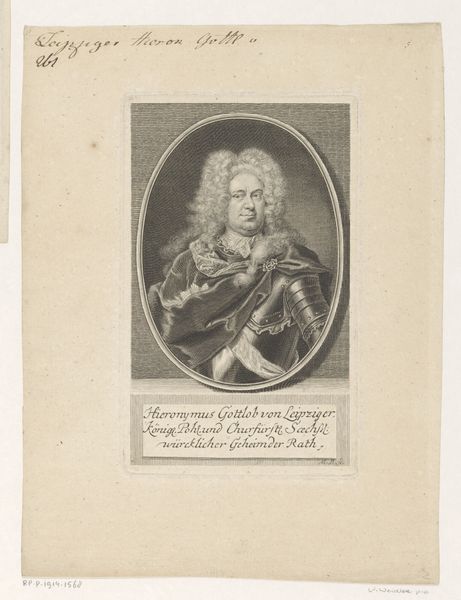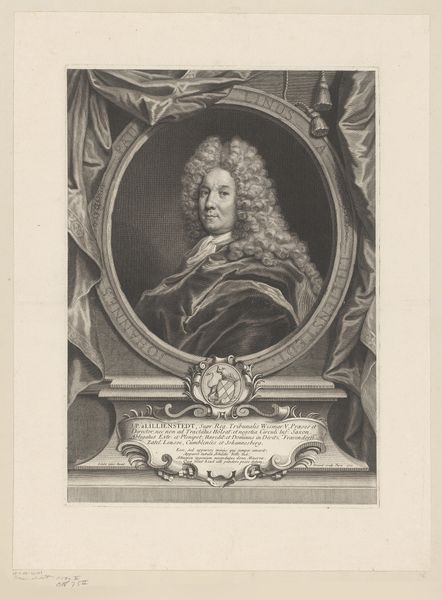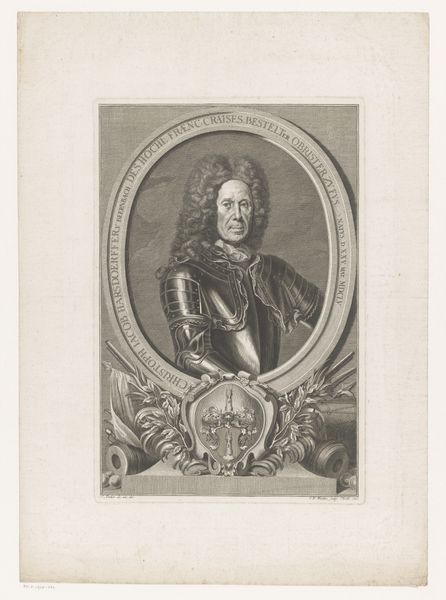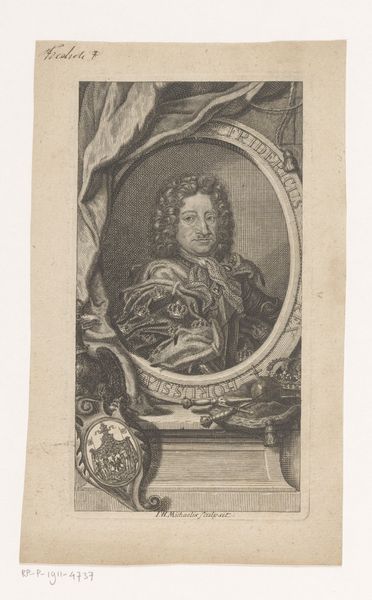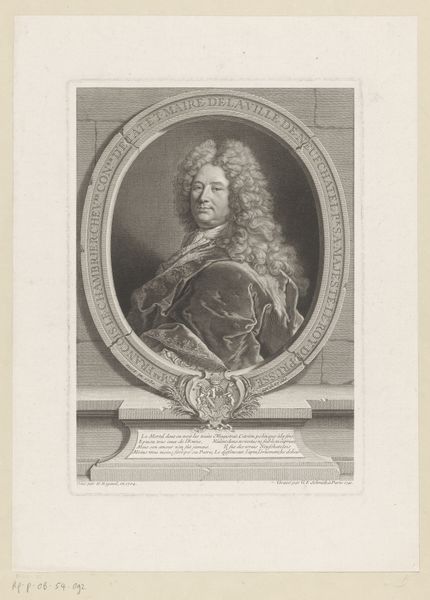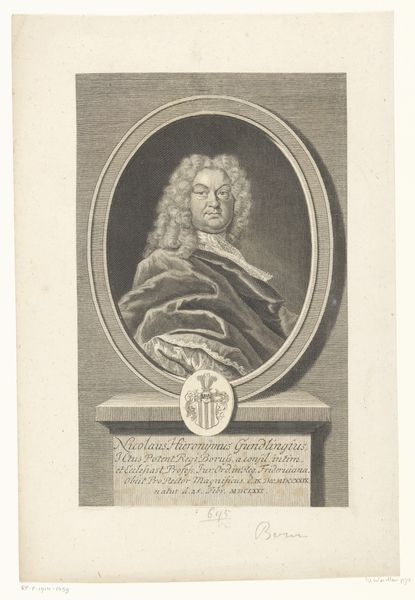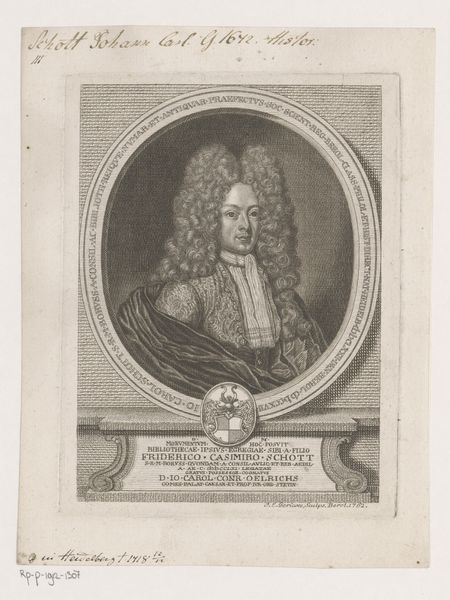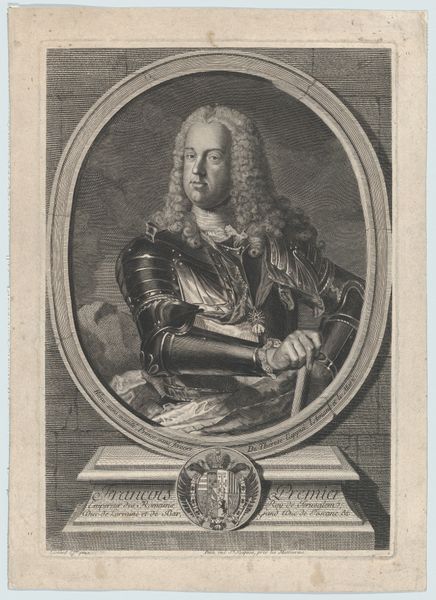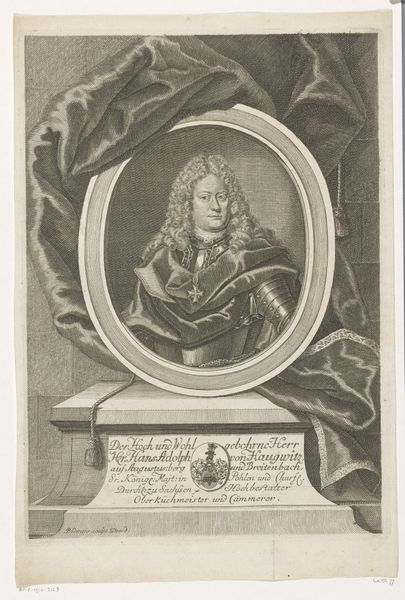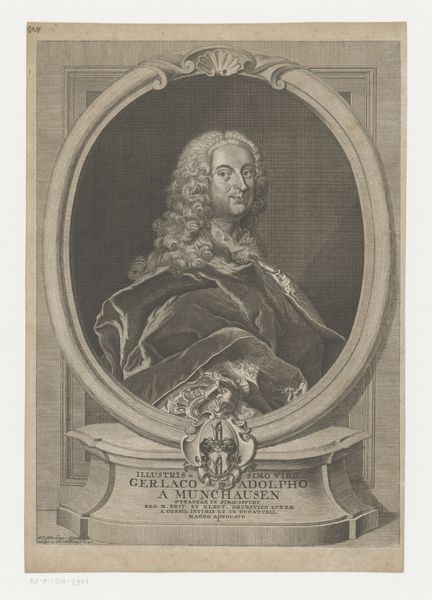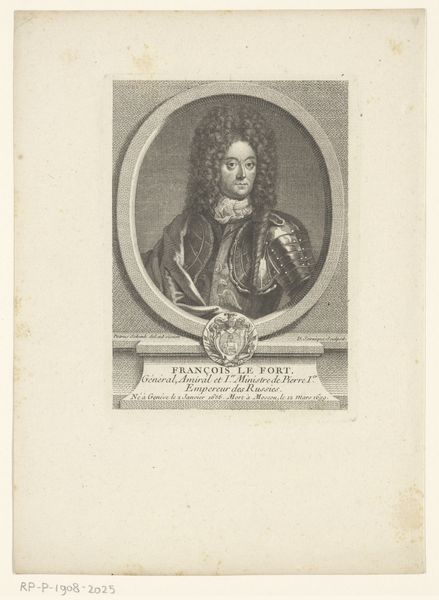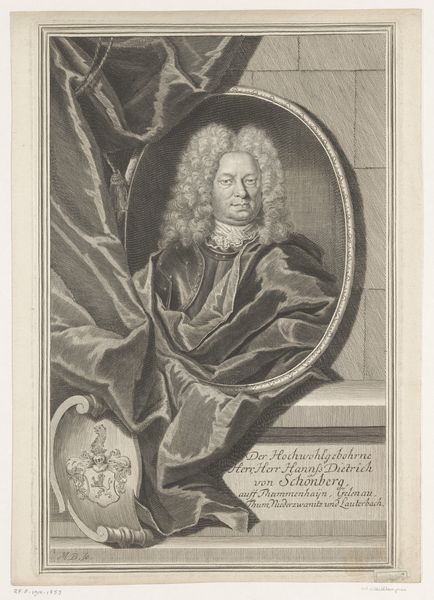
metal, engraving
#
portrait
#
baroque
#
metal
#
history-painting
#
engraving
Dimensions: height 326 mm, width 229 mm
Copyright: Rijks Museum: Open Domain
Editor: So, this is the "Portret van Friedrich Wilhelm Graf von Görtz," made around 1728-1729 by Andreas Geyer. It's an engraving, and the detail is incredible. The armor and elaborate wig immediately strike me. What aspects of this portrait stand out to you, particularly concerning its historical or cultural relevance? Curator: Well, seeing this portrait through a historical lens, it speaks volumes about the performance of power and identity in the Baroque era. Notice the sitter’s armor, presented not as a tool for battle, but rather as symbolic attire, carefully rendered. The historical context is also crucial. Görtz’s portrait as an engraving was inherently tied to distribution and thus to political influence. How do you think that context affects its impact on contemporary audiences? Editor: It's interesting to think about engravings as a kind of mass media of the time! It probably played a role in constructing a public image, carefully crafting how the subject would be perceived. How do you feel museums contribute to this perception now? Curator: Exactly. Museums, like galleries, now shape and contextualize such pieces. Consider how this portrait, divorced from its initial distribution context, gains new meanings through curatorial choices. Placement, didactic texts, and institutional framing all add to the political life of this imagery. Is there anything particularly noteworthy to you in this reframing? Editor: It makes me consider how a portrait becomes history and how institutions have a huge influence on it. I never considered how that imagery shapes political influence and our perspective. Curator: Precisely. Hopefully this image offers a window into the political functions of visual representation in that period, and how those mechanisms evolve in the current age.
Comments
No comments
Be the first to comment and join the conversation on the ultimate creative platform.
